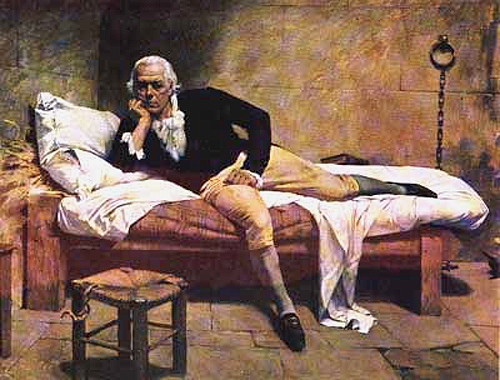Notes on
Francisco de Miranda (1750 – 1816)
Francisco de Miranda was born in Caracas, Venezuela
(for country notes, see: => Venezuela), a few
years after Toussaint Louverture and Tupac Amaru, his independence precursors
in Haiti and Peru,
respectively. His full
name is Sebastián Francisco de Miranda y Rodríguez. The form of his full
name in itself indicates that he came from a well-to-do Creole (criollo) family. In fact, his father was
a wealthy businessman from Spain's
Canary Islands (las Islas Canarias). Since he was raised in Venezuela, he
had a Venezuelan cultural identity rather than a Spanish identity. He joined
the Spanish colonial army, rising eventually to the rank of general. He
traveled extensively throughout Europe as far as Russia. During his travels he
established numerous powerful contacts, and he gathered support for his
independence ideas. Two of the European leaders who were impressed by him were
William Pitt the Younger (the Prime Minister of Britain) and Catherine the
Great, the Tsar of Russia. In London
he married a British lady with whom he fathered two children.
There are two main reasons why he
interests us more than some other worthy precursors of Latin American
independence. First, he made the transition from preparations for independence
to the actual beginning of the revolt against the Spanish metropolis centered
in Madrid.
Second, he led a rather "romantic" life that spanned the transition
from the Neoclassical Age of the late 18th century to the earliest
beginnings of Romanticism in the 19th century. He was a man of
letters (a humanist), a military officer, and a man of action, adventure, and
travel. In fact, his military career gave him battlefield experience on four
continents: Europe, North America, South America, and Africa.
In 1772 Francisco de Miranda
accompanied the Spanish army in a raid to capture Pensacola,
Florida, from the British (see the cultural
page for: => Florida).
During the American Revolutionary War he commanded Patriot forces in both Florida and Mississippi.
In 1783 he was in the British-American Colonies just as their War of
Independence was concluding. At that time he met with George Washington, who
became a model for the independence plans Miranda was preparing. Other
Americans he met are Thomas Paine, Alexander Hamilton, and Thomas Jefferson. He
liked most of what he found in the fledgling United States: the model of their
democracy, their institutions, their industry, and their industries. In 1791
and 1792 he played an active role in the French Revolution. He was even named
general in the French Revolutionary army. Thereafter, he formed an idealistic
liberation plan. Most significantly, he formulated a vision to unite all of
Latin America (i.e., both Spanish America and Brazil)
in a way similar to what became, in North America after 1789, the United States of America.
His was a truly grand plan, for in his vision, Latin America would cover the
area between the Mississippi River and Cape Horn at the southern tip of South America. The name of this giant nation, according
to his suggestion, was to be Gran Colombia (Greater Columbia). Its
leader, he said, should be called Inca, and would be a hereditary ruler
somewhat like the emperor of the Inca Empire. In other words, Miranda conceived
of a new kind of nation that would unite both white criollos and indigenous peoples.
Miranda's first attempt at armed
rebellion occurred in 1805 when he got American assistance from Thomas
Jefferson, James Madison, and others to put together a filibuster incursion
into Venezuela, but his multinational crew was captured before they could land.
In 1806 he had another attempt with British assistance. In 1810, Simón Bolívar,
who would be successful in liberating the northern part of Spanish
America, made Miranda a general in the new revolutionary army. On
July 5, 1811, independence was formally decreed in Venezuela
against Spain,
and he formed a revolutionary government with dictatorial powers in his own
hands. However, by 1812 his military uprising had failed. The Spanish army
counterattacked, and Miranda agreed to an armistice. Bolívar considered his
surrender an act of treason, for which reason he delivered Miranda to the
Spanish army. Miranda died in prison in Spain in 1816.
The most famous portrait of
Miranda was painted in 1896 by Arturo Michelena. (See the copy of the canvas
above.) It is titled "Miranda en la Carraca", which is the name of
the Spanish prison in which Miranda ended his days. For Venezuelans, this
portrait is the image par excellence of Venezuelan national identity. The style
of the painting is late 19th century realism with some brushwork
elements of Impressionism.



